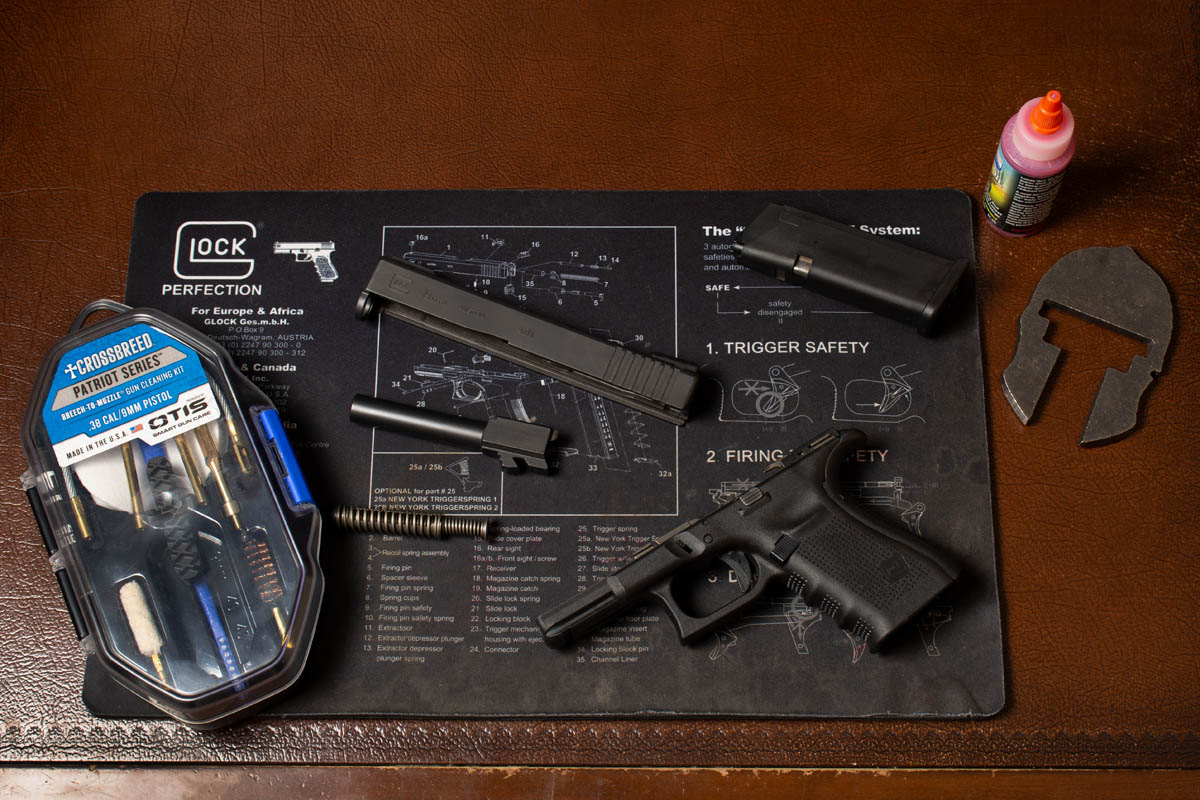
The OTIS Patriot Series Gun Cleaning Kit makes cleanup a snap!
![]()
![]()
Guns are fun. They’re loud, they protect us, ensure our freedom, and like it or not, guns get dirty. The glorious blast of gunpowder creates an awesome sensation, especially done over and over – and don’t get me started on the joys of a mag dump.
But after all the guns and games – and serious training – are over for the day and you’ve put several hundred (or thousand) rounds downrange, you’ve also made a mess, not just of the brass lying on the ground around you but of your gun. Officially, your gun is “fouled,” but we’d rather just call it by simple terms: dirty. So now it’s time to pull a Mike Rowe and do a dirty job: clean your gun.
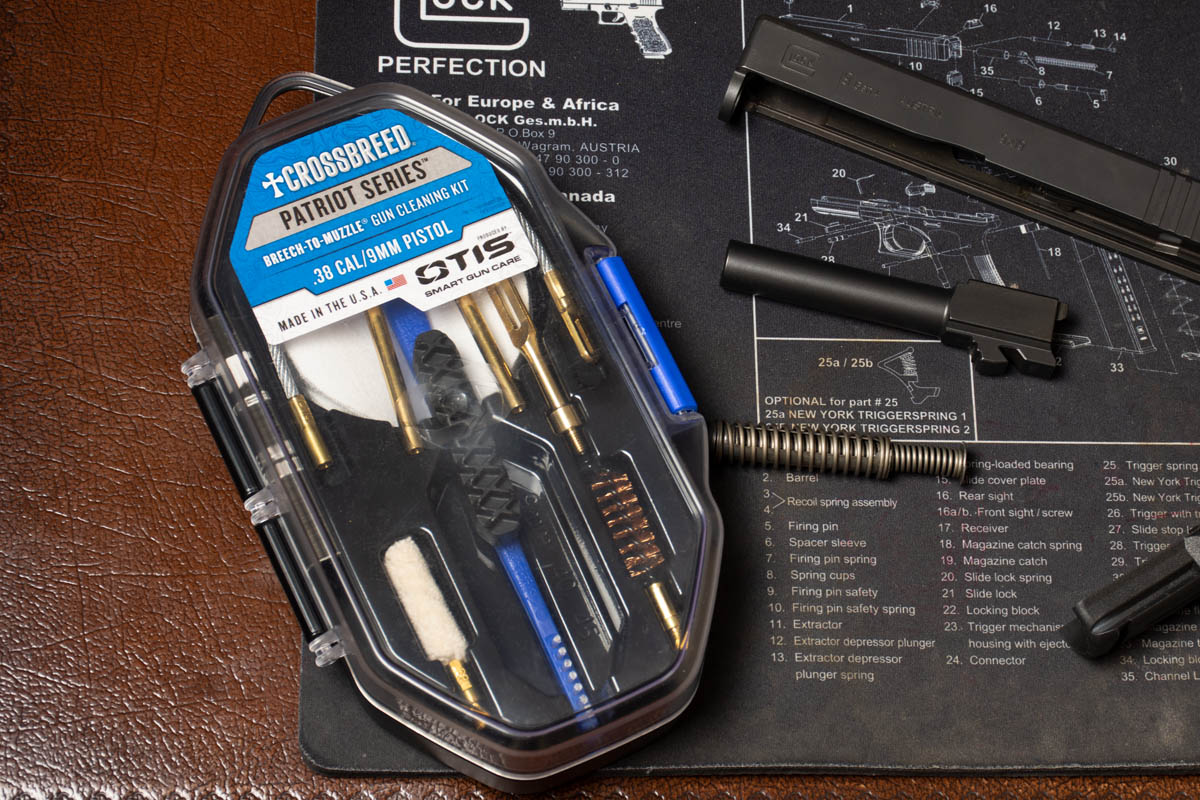
When to Clean
There are many schools of thought about how often to clean guns. Some folks (I count myself in this number) clean them religiously, after every time they shoot. Every once in a great while I’ll get all crazy and go several range sessions before cleaning just to see if all that fouling really makes a difference.
So far, I’ve never had any issues with any of my firearms jamming or misfiring because of grime, save one: the .22 rifle, a caliber that is particularly sensitive to messy barrels and actions. Once I run the bore snake through and wipe out the chamber, it’s back in business. But my pistols and AR seem to be unfazed by debris.
However, that doesn’t mean I’m a fan of negligence. A broken gun is a useless gun, and let’s face it, a gun that won’t work because it’s dirty is not only useless but dangerous. And you could have prevented this mishap by taking care of your equipment.
So let’s talk about the basics of how to clean a gun. For this article, we’re addressing handguns specifically. ARs and other rifles may need a little more love and attention depending on the make and model, but semi-auto handguns are fairly universal.
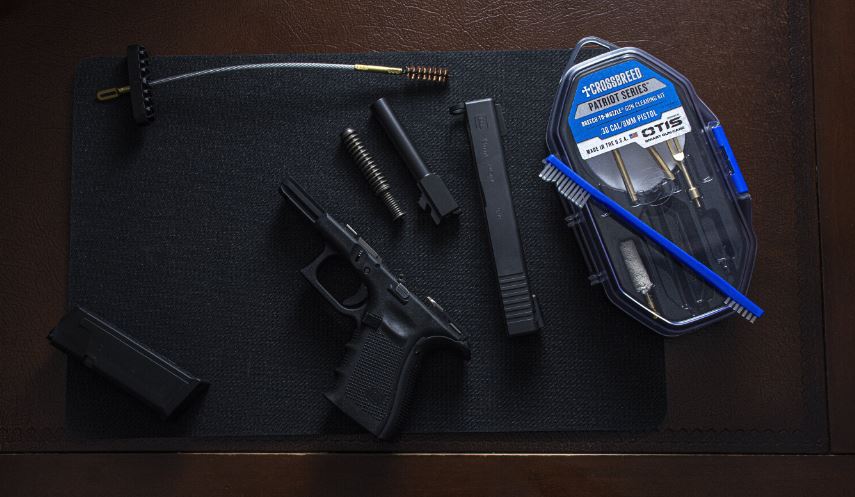
STEP 1:
The first step is to clear the gun and make sure it’s safe. Remove all ammunition from the gun and double-check it. Have someone else check it too, just to be sure it’s empty. Now, take all the ammunition completely out of the room. You want to make sure there is zero chance of a single round accidentally finding its way back into the gun until the whole cleaning process is over.
STEP 2:
Next, field strip the gun. This process will vary depending on the model, but basically it starts by finding the takedown pin or assembly on the side of the frame and rotating or pulling pins until the gun comes apart the way it is supposed to.
Each gun is a little different. For instance, the slides on a Glock 19 and a SIG P365 come apart slightly differently. I have a Walther that requires a special key to release the slide. Check your owner’s manual if you are unsure how to do this.
Yes, guys, there are directions included with the gun. They are there for a reason. It’s okay to admit you might need them.

STEP 3:
Once the firearm is fully field stripped, including removing the empty magazine, slide, barrel, and spring, it’s time to start cleaning. Your cleaning supplies should be designed for firearms, not just household cleaners or solvents used for other things. Firearms require special care, so use cleaning kits designed specifically for them. We like the Otis Patriot Series Gun Cleaning Kit, a small, easily-stowable kit that has the basic tools you will need to reach the nooks and crannies where carbon and dirt build up inside the barrel, slide, and frame.
I like to start my cleaning process with the simple stuff: running a bore snake or bore brush through the barrel. If your bore snake has a metal tip, run the snake through from the chamber end to avoid scratching the muzzle. Once or twice through the barrel should be enough to clean out any residue.
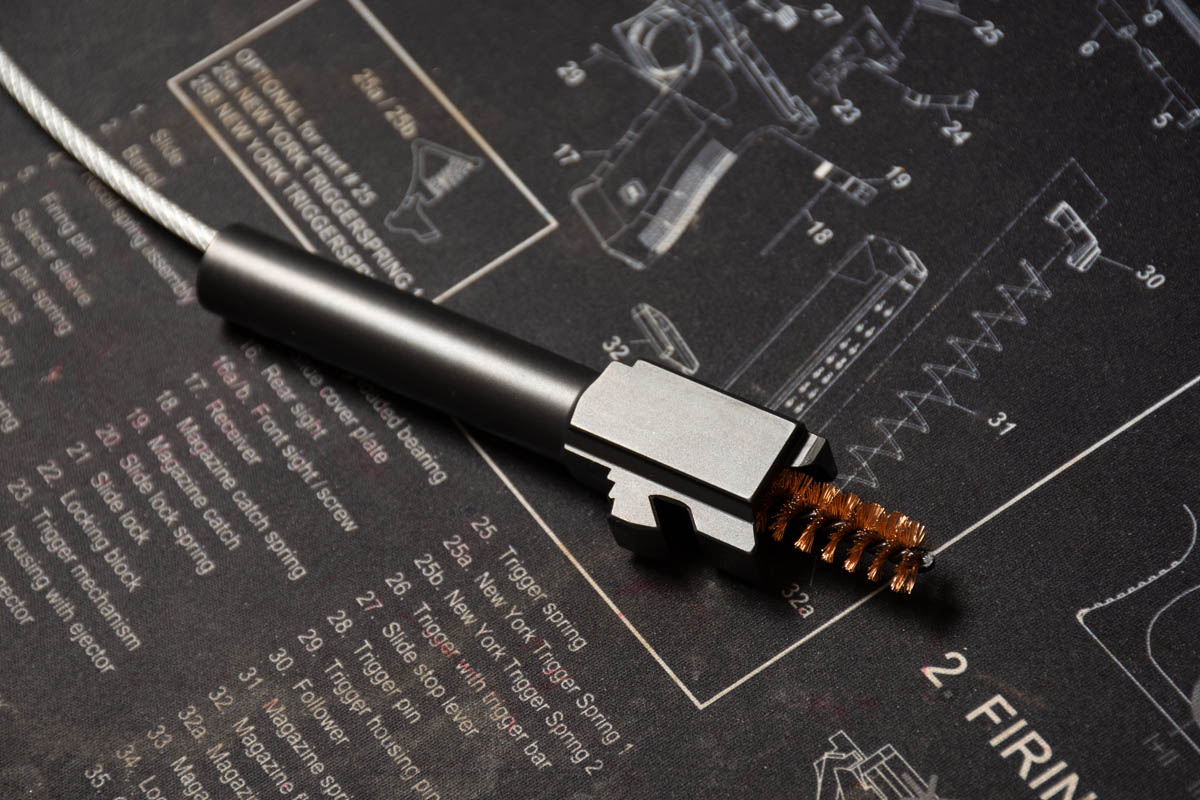
Next, spray some solvent on the loading ramp and wipe it clean with the cloth included in your cleaning kit. Unless your gun is brand new, it’s unlikely you can scrub enough to make the ramp shine, but try to get as much residue off as possible. This ramp needs to be smooth for the rounds to load correctly into the chamber.
Do the same thing with the underside of the slide. This might require a brush to scrape off all the grime. For particularly stubborn gunk, let the solvent soak for a minute or so before brushing. Repeat this on the frame, paying particular attention to the trigger assembly, where buildup can cause it to seize, leaving you in a “sticky wicket” as our friends across the pond say.
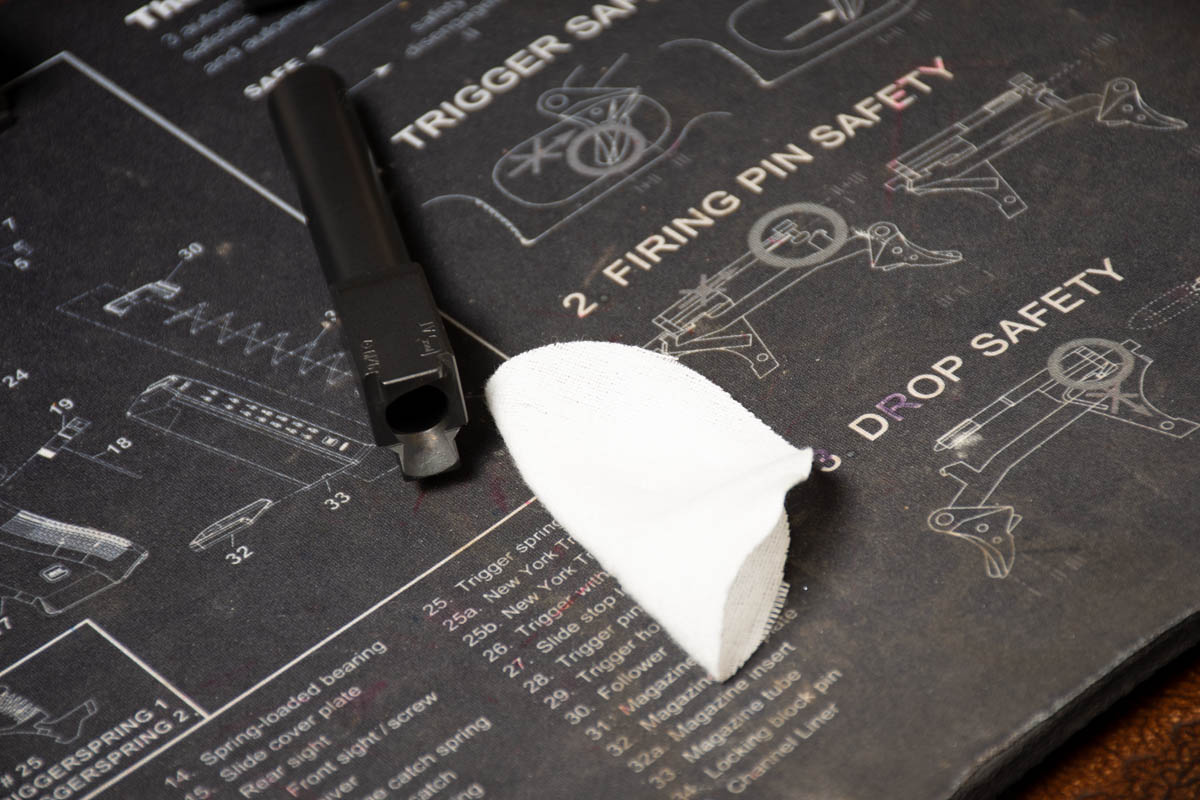
Step 4:
Once the gun is clean, it’s time to add a bit of lubricant in critical wear places where parts rub together. Place a few drops – it doesn’t take much – into the action and along the frame slide rails to reduce friction and keep the mechanism running smoothly. Now that the parts are cleaned and lubed, reassemble the gun in the reverse order from the way you disassembled it.
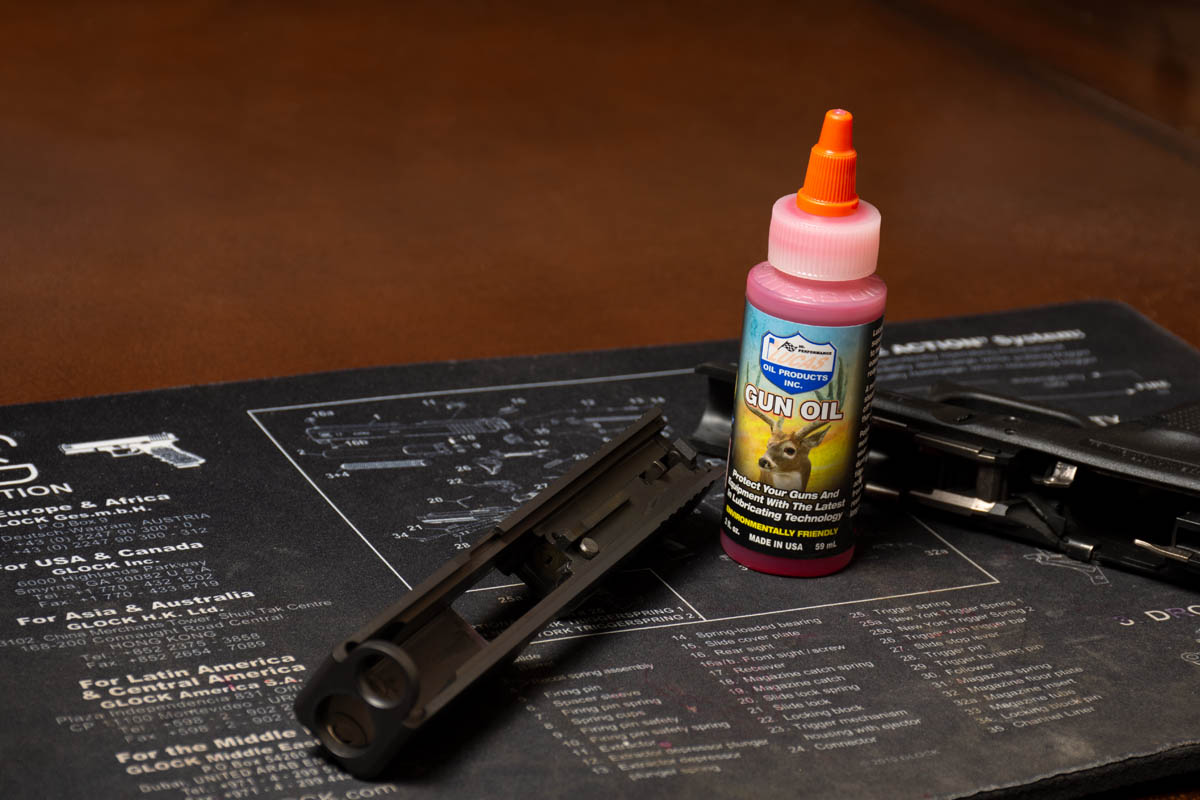
One last step: rack the slide to make sure everything works right. If you experience any abnormal resistance, stop and figure out what is causing the slide to not slide correctly. Often, this can be a misaligned slide-to-frame relationship. If it’s still not working right, consult a gunsmith to see if something may have broken during the cleaning process.
Do NOT put ammunition back into the gun until you are sure everything is working correctly.
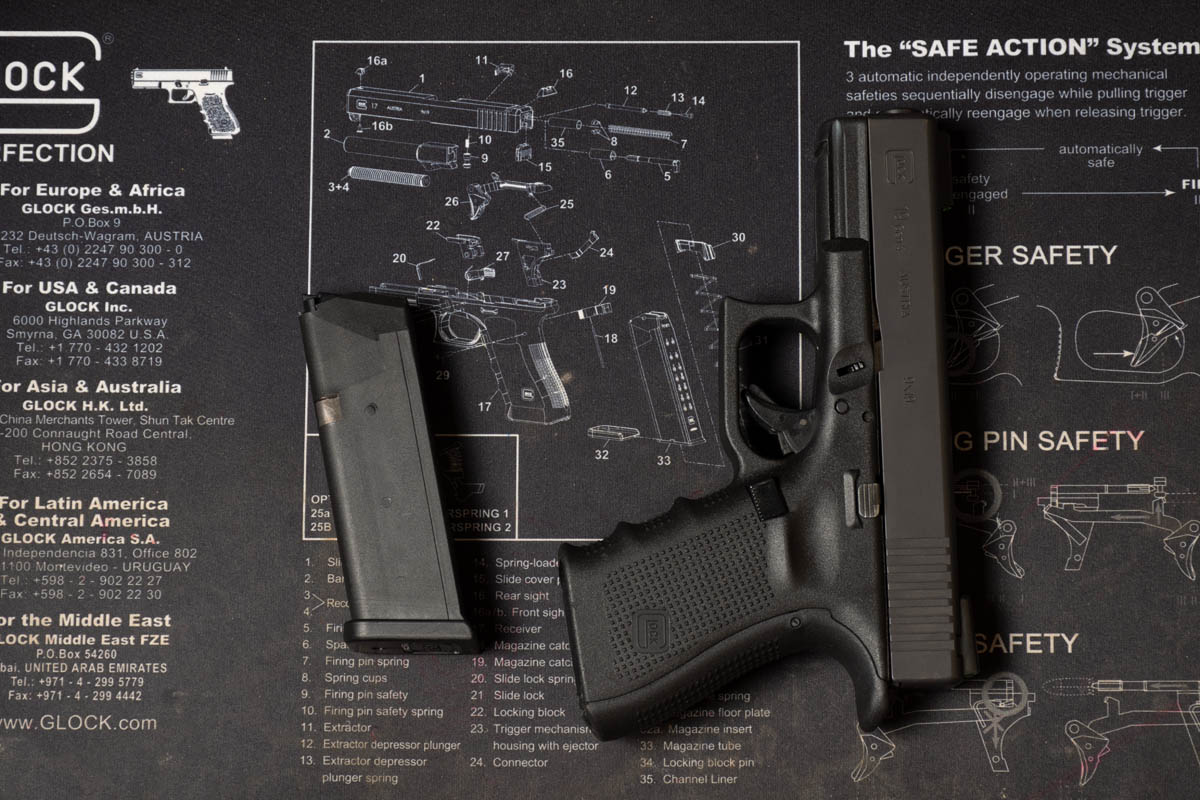
Ready to Roll!
While there is no set schedule for the “right” cleaning frequency, it’s important to keep your firearms in working condition. The last thing you need in a real gunfight is to pull the trigger and nothing happens, all because you didn’t take the time to clean.
ABOUT THE AUTHOR:

David Workman is an avid gun guy and a contributing writer to several major gun publications. In addition to being an NRA-certified RSO, David trains new shooters on basic handgun skills and CCW requirements and is a strong advocate for training as much as you possibly can. “Real life shootouts don’t happen at a box range.”
![]() You may also enjoy these popular articles:
You may also enjoy these popular articles:


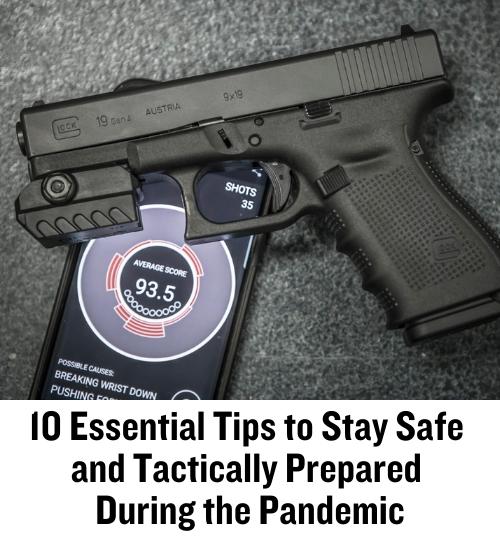

©MTC Holsters, LLC and CrossBreed Holsters Blog, 2020.
Unauthorized use and/or duplication of this material without express and written permission from this site’s author and/or owner is strictly prohibited. Excerpts and links may be used, provided that full and clear credit is given to David Workman and the CrossBreed Blog with appropriate and specific direction to the original content.



It was really interesting when you mentioned that you clean your firearms every time you use them. My brother is wanting to get into competitive shooting and he is thinking of starting with pistols. I would imagine that the pistols would work better if he kept them clean.